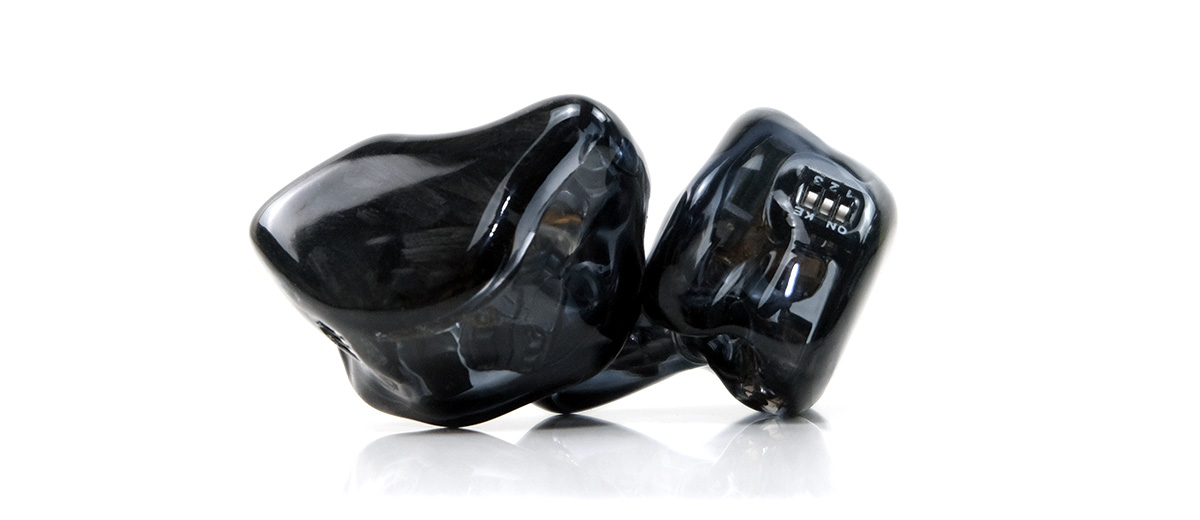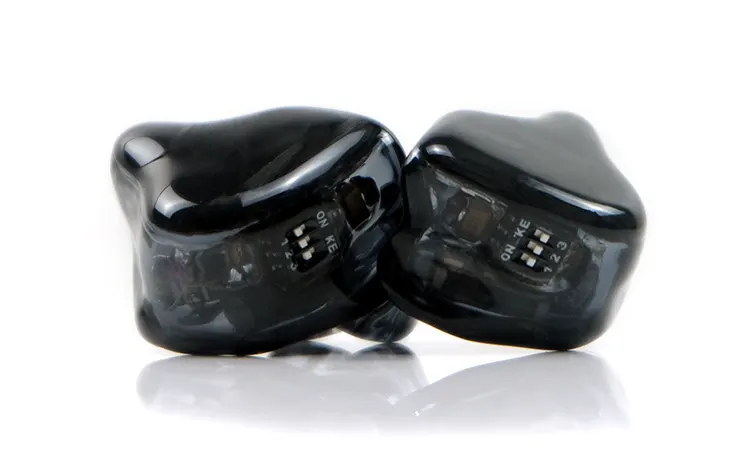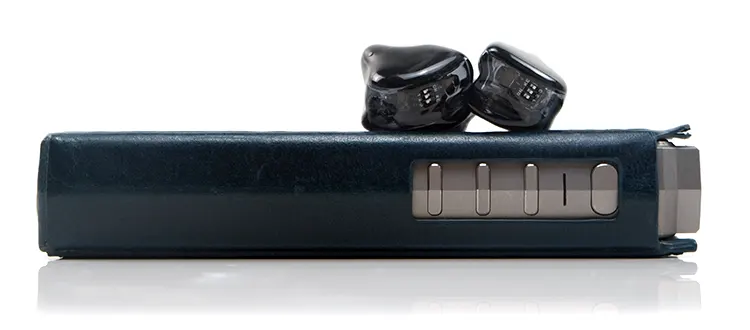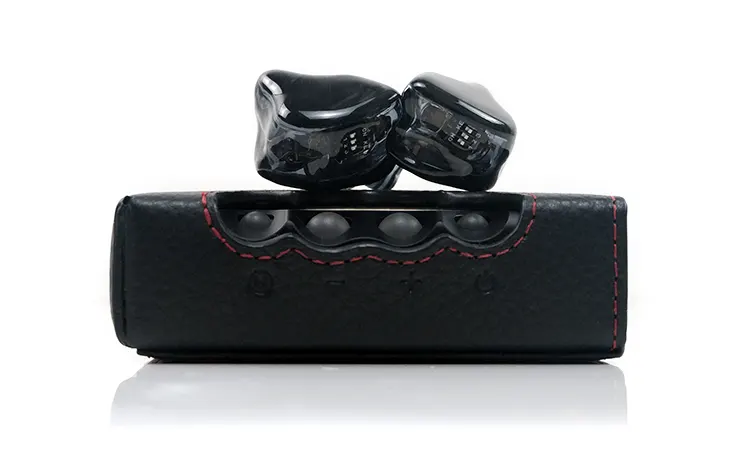Sound Impressions
The following Omegon MK2 sound impressions were created using a mix of the HiBy RS8, the Cayin RU7, and the Chord Electronics Mojo 2 for our main sources and amplification.
Default Tuning Summary
With all the switches turned off, the Omegon MK2 is a ‘vocal-centric’ presentation underpinned by some impressive low-end presence but also a coloration that errs to the even-harmonic and smooth side.
The initial descriptive phrase that hung in my thoughts is that of a slightly dark and relatively dense tone with a polite but distinct treble tuning that peaks around 7k and a diminution of sparkle thereafter.
You can, however, pick up on the distinct EST sound for the highs, (more so with Switch 3 turned on). It’s delicate and subtle rather than overt or overpowering with a classic ethereal purity in triangle strikes, tambourine shakes, and high-pitched synth notes.
Arguably, this is also a slight weakness in the default Omegon MK2’s presentation. Just a relative lack of treble energy and presence that our compared monitors can deliver along with a soundstage that is not quite as holographic in its imaging complexity.
I think what impresses me the most though is the coherence of the Omegon MK2 bass and the mids. It is very clear the type of tuning Alpha Omega wanted with the Omegon MK2. Something with meat on the bone, something that is less ‘pitter-patter’ or all punch and no weight.
This has good weight but more importantly, excellent definition and clear separation from the mids. In turn, this allows the Omegon MK2 to push up the bass intensity without drowning out the excellent vocal presence.
Multiple Tunings
The Omegon MK2 frequency responsive curve is not one but multiple with the dip switch options producing subtle variations on the core tuning.
Switches Off
The core tuning is ‘Harman sensitive’ with a pleasing sub-bass elevation that is slightly dominant over the mid-bass punch leading into a noticeable dip through an upper-bass and lower-mids presence that ranges more on the neutral side.
From 1-4k the Omegon MK2 has some nice pinna gain pushing vocals front and center when required with only a slight dip from 4-6k before it peaks around 7k though only by 1-2 dB over the rest of the chart and not something I find pervasive or distracting in terms of bright coloration.
From 7k onwards the Omegon MK2 has a fairly sharp drop to 10k that gives it that somewhat darker default sound but the headroom is not an issue with those EST drivers creating some welcome headroom beyond 12k.
Switch 3 On
Switch 3 produces the biggest change from the core tuning and I suspect this is the one for those looking for the most balanced or cleanest sound signature from the Omegon MK2.
There is roughly a 5 dB drop from 20Hz to 200Hz with less presence from the sub-bass right up to lower mids. Thereafter, or from around 1k there is roughly 2 dB less elevation than the default tuning up to 7k so vocal imaging drops back a little creating a slightly more relaxed midrange presentation.
Switch 3 also has more treble energy than the rest of the switch options and it’s the option where you can best hear the EST driver’s presence on higher-pitching instrumental timbre.
Switch 1 On
Switch 1 is the weightiest option with the strongest sub-bass and pinna gain emphasis. The punch is at its most concussive and vocals sound very forward with a good 5 dB rise over Switch 3 from 50-100hz and 2-3 dB more push from 1-4k.
Its drawbacks are it can dominate everything so when the energy is centered on the lows and vocals everything else can get drowned out. For sparse modern pop or R’n’B mixes that is less of an issue making them strong genre picks for this Switch.
Switch 2 On
Switch 2 is more mid-bass centric with a nice punchy undertone and a little more warmth and lift to the upper-bass and lower mids compared to the other two switch presentations. Of the three, this option also keeps vocals more to the fore but just slightly behind Switch 3’s vocal imaging.
The sub-bass presence does drop by 1-2 dB over Switch 3 so, slightly less depth and not as much power, more of a typical BA woofer punchy tone to its low-end delivery.
Combos
Switch 1 and 2 both turned on give you more of everything up to the mids. More sub-bass, more mid-bass punch, better lower-mid presence, and a gentle lift in forward imaging for the 1-4k range over Switch 3.
Of the potential options, this is the most brutal in terms of weight and aggression but still leaves the Omegon MK2 a shade on the dark side with a much stronger emphasis on the lows and mids.
Surprisingly, with all switches turned on it’s not an overload to the senses. Not every aspect of the Omegon MK2’s FR is pushed forward.
The tuning lay somewhere in between the default switches off mode and Switch 3 on its own in terms of bass presence. It was also closer to Switch 3 for midrange and treble prominence.
Of the potential options, I would rate the ‘all switches on’ and Switch 3 alone as probably the most balanced of the combinations with the former adding a bit more bass presence and weight to give it some additional gravitas on the lows.
Synergy
Efficiency
The Alpha Omega Omegon MK2 is rated at 104dB @1kHz/mW and in truth I would rate this as a medium efficient IEM. It certainly required more juice than the Custom Art FIBAE 7, qdc’s Anole V6, and the Craft Ears Craft 6, our three compatible monitors on page 3 of this review.
I do not want to give you the impression this requires loads of power. The Omegon MK2 will still run just fine from most quality DAPs and dongles.
Rather I felt low gain with our tested DAPs ended up with a lot of play in the volume control with several steps for a noticeable increase in volume rather than 1-2. Even with the likes of P+ or Turbo Mode on the N8ii and the RS8, you might find low gain volume control to be a slower-than-normal adjustment process.
I found myself pushing the gain setting to medium or high and lowering the volume a little at the same time to increase the sensitivity level for volume tweaks.
Also, something about the dynamics on a higher gain seemed to suit the Omegon MK2 better, especially if using a DAP pairing in SE mode. If you are going balanced then medium gain will be a more likely settling point.
I suspect the EST drivers, like most EST driver monitors I have tested, are the culprits here for requiring a bit of lift in volume or gain levels.
For dongles, I use these in high-gain by default so there was less of a decision to be made here for which gain level to use. Volume was higher but nothing that stretched any of our chosen dongles such as the RU7 to the limit.
DAP Pairing Preferences
I tested the Omegon MK2 with a fairly eclectic mix of DAPs including the flagship HiBy RS8, the iBasso DX320, the Cayin N7, and the older N6ii with the R-2R R01 motherboard. As always, I also threw the Mojo 2 into this grouping as it tends to perform very well with the Omegon MK2 and is far cheaper than most DAPs.
What I tended to subjectively bias to was either a DAP that gave me plenty of space and separation or a more neutral output with good dynamic range and treble extension.
Ideally, a mix of all of those attributes would make the perfect pairing with the Omegon MK2 since I felt the slightly darker smoother tuning needs as much headroom and separation as possible to perform at its best.
DAP Pairings
For example, the N7 stretched the soundstage out nice and wide with the Omegon MK2 and introduced an impressive level of separation that I think benefits the presentation quite nicely through the mids.
However, it is also a denser analog sound signature and might not tease out as much sparkle or treble presence as the other 3 DAPs. However, I would say it’s very refined with excellent headroom so it does not lack space or air.
The DX320, on the other hand, is the most balanced DAP sound signature with AMP12. It brings a more neutral flavor to the Omegon MK2 with a little more treble presence and excellent staging width. It is more neutral on the lows compared to the N7 but the speed and punch from the Omegon MK2 from this combo make up for that.
The Mojo 2 I placed on the same level as the DX320 in terms of neutral flavoring with the Omegon MK2. However, I felt the timing from the Mojo 2 was better with a slightly fleshier mid-bass punch and improved vocal density. It felt more immediate than the DX320 with a stronger center image but not as wide and airy.
The RS8 will take the Omegon MK2 to the highest resolving level but the more neutral midrange didn’t connect as well for me as the other DAPs. Whereas the N6ii brought some excellent bass extension and some good treble presence but left the midrange a bit thinner which does not suit the Omegon MK2’s rich and smooth midrange.
Dongle Pairings
I tested 4 dongles with the Omegon MK2 including FiiO’s flagship KA5, Cayin’s RU7 and RU6, as well as the HiBy FC6. All the preamble for what I was looking for in the DAP pairings above applied here also; namely good separation and clarity, a dynamic bass response, and plenty of headroom.
The clear standout dongles between those four were the RU7 and the FC6. Both created space though the FC6 less so in terms of height with the RU7 edging in terms of overall separation.
You get some excellent depth from the FC6 and it does seem to play up the major strengths of the Omegon MK2, namely a noticeable level of weight and impact from the low-end and rich vocal detail and texture presented intimately.
The RU6 was airy but I found the very ‘creamy’ and euphonic treatment of the Omegon MK2’s presentation to take a little away in terms of definition. It’s too soft for my tastes, particularly on the Omegon MK2 lows. I would prefer something tighter for the bass response which the RU7 does better at.
The KA5 is very neutral in its imaging and tone though not something I would term as bright. There is a very slight hint of warmth. My main concern with this pairing was the lack of depth in the staging, leaving the Omegon MK2 sounding more centered and less 3-dimensional compared to the other dongles.





